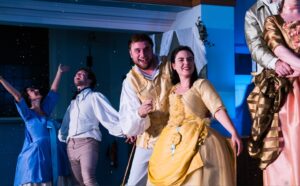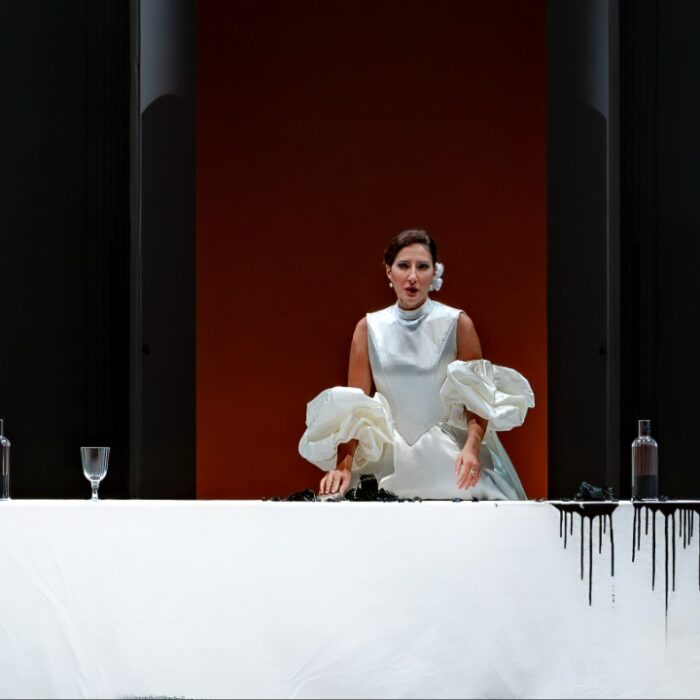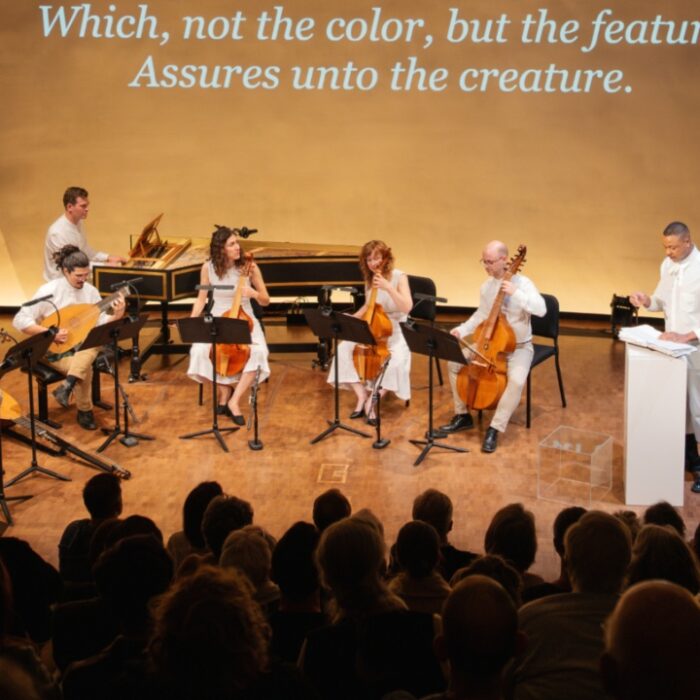
Cumbria Opera Festival 2025: The Marriage of Figaro
By Mike Hardy(Photo: Chris Tribble)
In June of this year, OperaWire was fortunate enough to report and review the sterling efforts being made by the regional opera company New Sussex Opera in bringing the wonderful world of opera to the masses, performing glorious art away from the mainstream houses with their performance of a rarely sung opera, Saint-Saëns’s “The Silver Bell.” This time, OperaWire travels to the beautifully idyllic land of Cumbria, a ceremonial county to the north of England that borders Scotland and is home to the Lake District National Park and the Pennine hills. It is a highly rural and scenic area.
The Cumbria Opera Group, described as “truly a hidden gem,” performed Mozart’s “The Marriage of Figaro” in Penrith Methodist Church, a large and wonderfully suitable auditorium, to a pleasingly substantially sized and most appreciative audience.
In a statement made by the group, Cumbria Opera Group was founded in 2016 to: “bring world class opera to Cumbria, and to educate young Cumbrians in the arts. We believe that opera is relevant and necessary in the contemporary arts scene, and should happen everywhere, regardless of rural isolation or existing access. Cumbria is a county that has historically inspired some of Britain’s finest poetry, art, and music, and should never be a place where opera is shut out, but an area where it flourishes.”
Founder Joe Davies sports an impressive résumé. He is Assistant Conductor of the English Symphony Orchestra, Musical Director of the UK Proms in the Park Orchestra, Canterbury Symphony Orchestra, Oxford Millennium Orchestra, Leamington Sinfonia, Solway Sinfonia, and Coventry & Warwickshire Youth Orchestra, and of course Artistic Director of the Cumbria Opera Group. His opera credits with the group include “Don Giovanni,” “Così fan tutte,” “Acis and Galatea,” “Trouble in Tahiti,” “Dido and Aeneas,” and “Venus and Adonis.”
“The Marriage of Figaro” is Mozart’s chaotic whirlwind of mistaken identities, twists and turns, a crazy plot filled with disguises and tangled romantic affairs. It is a chaotic farce centered on the wedding day of Figaro, and his fiancée, Susanna. Count Almaviva, a philandering nobleman, has designs on Susanna, and attempts to use his power to delay the wedding, hoping to assert his feudal right to bed Suzanna, (who is a servant to the Countess Rosina) on her wedding night. Meanwhile, Figaro is being blackmailed by his former love interest, the housekeeper Marcellina, into marrying her instead, leading to a series of mistaken identities and comedic schemes orchestrated by Figaro, Susanna, and the countess to expose the Count and resolve the tangled relationships.
The intricate plot unfolds throughout a single day, involving the Palace pageboy Cherubino, who is hopelessly in love with the countess. Through a series of elaborate deceptions, the Count is ultimately exposed and shamed, leaving him pleading for forgiveness. It then transpires that Marcellina is Figaro’s mother, before the opera concludes with the joyous union of Figaro and Susanna and the reconciliation of the Count and Countess.
Spoiler alert: As NUTS as the plot is, unlike most other operas, no-one dies and they all, (seemingly), live happily ever after.

(Photo: Chris Tribble)
Cast Highlights
Baritone Ross Cumming takes the titular role of Figaro. A leading performer in roles at Opera Holland Park and Grange Park, he embodied the spirit of Figaro splendidly here, displaying a great comedic character and singing with richness and splendid enunciation.
Soprano Sofia Kirwan-Baez sung the role of Susanna. Somewhat reserved in the opening acts, she blossomed beautifully to perform with exquisite colours in the famous duet “Canzonetta sull’aria,” before delivering a delightful and emotive “Deh vieni, non tardar” in the fourth act.
George Robarts as Count Almaviva effected with just the right amount of frivolity and pomposity. I always considered that Mozart, whilst constructing a complicated score for this role, failed to infuse it with sufficient melody, rendering it almost atonal at times. Robarts worked hard, showing great nuance throughout and managing to inject some conviction into an otherwise improbable character.
Soprano Caroline Taylor plays Countess Rosina. Her second act “Porgi, amor, qualche ristoro” and third act “Dove sono i bei momenti” provided some of the key highlights of the evening, both arias sung with measured beauty, the former hinting at a particular full-bodied, clarion tone.
Special mention must be reserved for Gabriella Noble in the role of Cherubino, the paige. Not only a voice of tangible quality, she conducted herself throughout with almost pantomime level parody, a veritable, pint-sized bundle of energy that infused every scene she appeared in with great hilarity.
Holly Brown and Chris Murphy provided excellent support in the roles of Marcellina and Bartolo, respectively, perfectly complimenting the tight group.
Production Details
Set designer Emma Turner had limited options, given the stage setting but faired well with simplistic but effective rustic designs, which were most evocatively illuminated by PJ Summers lighting arrangement.
Costume designer Meg Bowyer did a splendid job, combining the authentic style of the era with modern, whimsical flourishes such as the yellow laced Doc Martin boots worn by Susanna.
Huge plaudits must also go to director Persia Babayan-Taylor for contriving a wonderful telling of a tricky, convoluted tale with marginal resources. She made great use of the balconies, doorways and aisles, having the performers enact their roles there, all of which contributed greatly to creating plausibility in an otherwise implausible tale.
Conductor Melvin Tay held rein on a splendidly compact but most proficient nine-piece orchestra that included a harpsichord, eliciting some wonderful, precise tempo, but I felt he left the singers pretty much to their own devices, seemingly offering little in the way of direction.
A wonderful twelve-member chorus completed the set up. Sung in English, translator Lucy Britton took one or two slight liberties by injecting the libretto with the odd, mild profanity or imprecation, but it amused the audience and seemed suitably appropriate for the occasion.
The Cumbria Opera Group festivals commenced in 2021, and its performances have frequently engendered critical acclaim. The remainder of the 2025 festival will see performances of Benjamin Britten’s “The Turn of the Screw,” “Porgy and Bess Reimagined” as well as a Masterclass with acclaimed English soprano, Joan Rodgers, “Opera by Candlelight” performances and a number of Education Workshops throughout schools across Cumbria.
I share the very ethos of the organization that I am privileged to write for, OperaWire; that far from dying, opera is flourishing, and it is in no small part due to provincial companies like Cumbria Opera Group, who strive to help propagate this beautiful art, bringing it to those masses who might otherwise not have the opportunity to attend the first tier houses.
And for that, they, their amazing band of performers and artists, can be justly proud.
Long may they reign.



